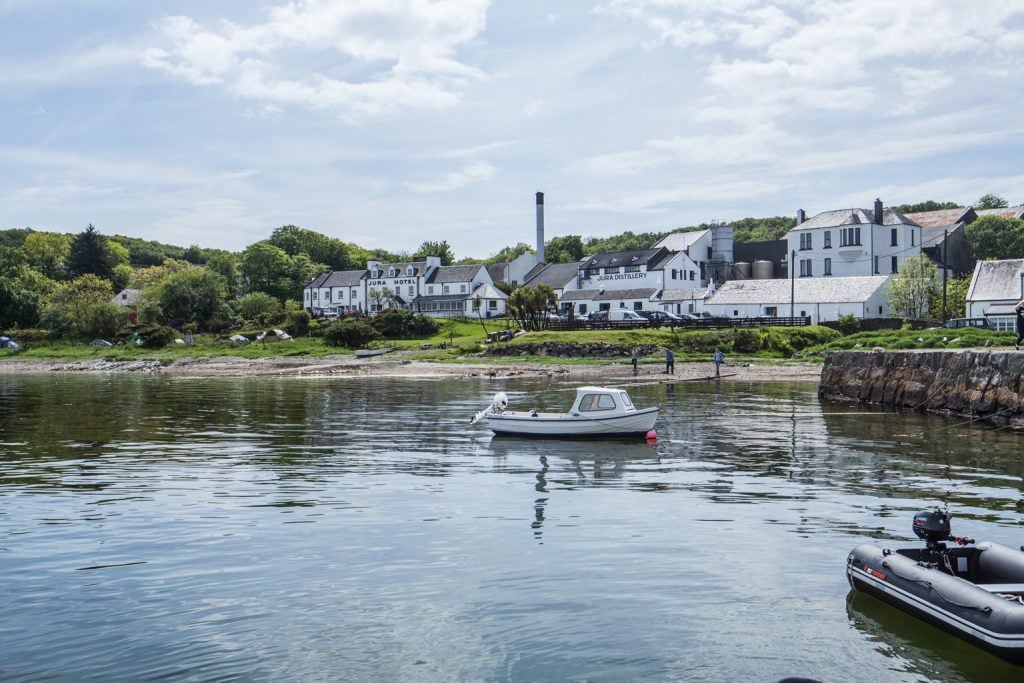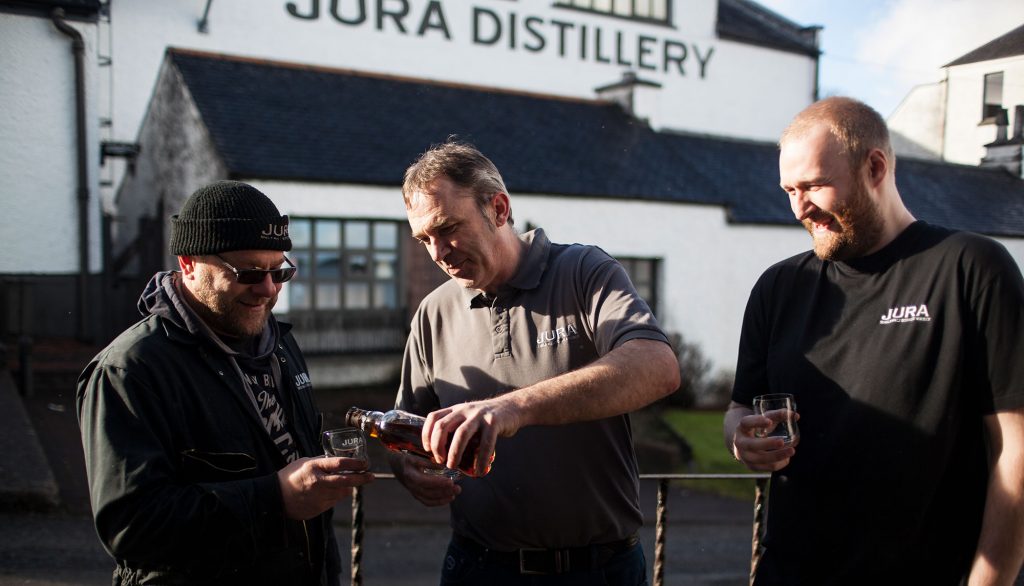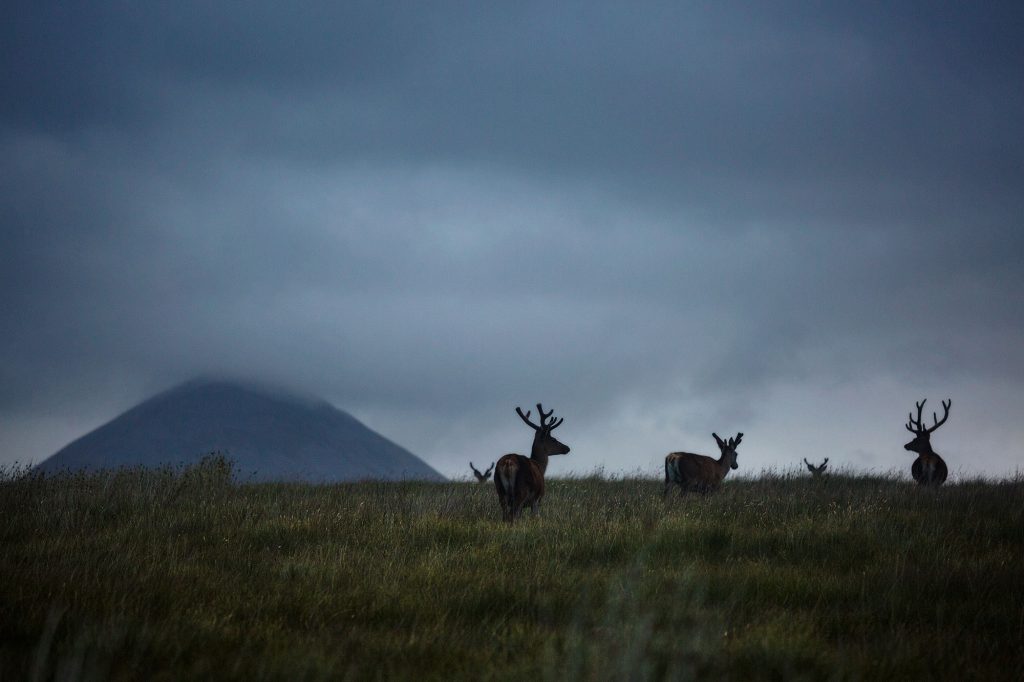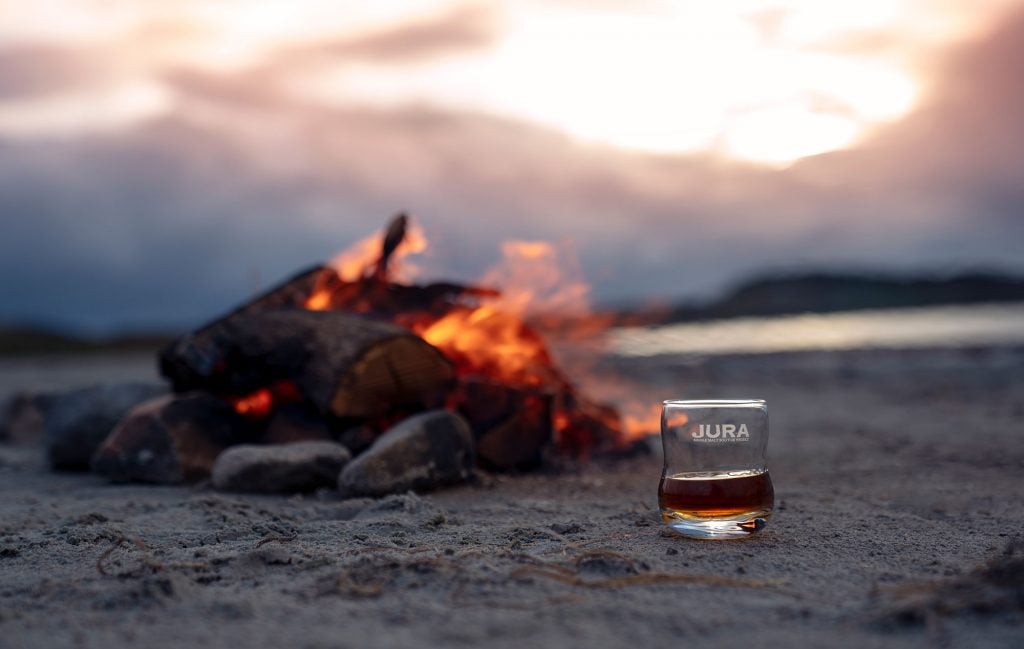‘Jura gets into your blood – it’s that kind of place,’ said Willie Cochrane, who ran the distillery for decades.
He was talking about the island, one I visited recently for the first time. It’s true, the place has a calm and certainty to it. Like it knows exactly what it’s about.
The same isn’t as easily said about any distillery or its whisky. Not those that have existed for decades or centuries. Most have moved with the market at some point, ducked and weaved to stay in the game. Multiple owners, different motivations, blender fodder to shiny single malt and every story in between.
Jura has its own tale. It’s an outlier. A whisky made on an island smothered in peat ought to be smoky, right? Instead, the DNA of modern Jura is fruity, grassy, occasionally creamy, and only a little smoky if the mood takes it.

Jura, the island and the distillery
Just Jura: creating the whisky
Jura was rebuilt in the 1960s with tall, towering stills, at the behest of blenders who wanted a lighter spirit. The set-up remains pure Sixties: semi-lauter mash tun, stainless steel washbacks, and stills so tall they had to be shipped in on the largest boats that could squeeze through the Sound of Islay.
At 7.7 metres high, they demand the spirit climb, fall, and climb again in endless reflux. That gives you a spirit vibrant in fruit, with citrus brightness, banana esters, and a touch of marshmallow softness.
Fermentation runs long enough to bring out the tropical and more malty elements. The washbacks are still stainless steel, still massive, and still capable of creating the kind of aromas that once had island children dangled over them to clear their sinuses. Occupational health probably frowns on that now.
Maturation is a little more traditional. American oak at the core, sherry and wine casks adding seasoning, and island warehouses giving the spirit a steady coastal hum.

The distillery reflects the island it calls home. It’s an underdog, a fighter.
The new dawn
Yet, Jura whisky has suffered, reputation-wise. Critics point to relentless range overhauls or too many finishes that sometimes felt like disguises. For years, it was the whisky neither peaty enough nor weighty enough to win over purists. Caught in the middle, it became easy to overlook. A whisky for supermarkets. For people who don’t “get” whisky.
There’s food for thought for the distillery, for sure. In recent years, it feels as if the entire Whyte & Mackay stable has bid to leave the past behind. Fettercairn is totally reborn. The Dalmore is being revamped. Tamnavulin still hides a little, but its wine cask editions are a secret weapon. Whisky makers like revered Scotch blender Kirstie McCallum and the impressive Joe Ricketts are the kind of steady hands to get a grip of Jura and lead it into a new era.
I’ve had the fortune of attending a few select tastings of Jura whisky in the last couple of years. The potential is huge. While visiting the distillery, I tried an array of single cask delights: Amontillado, first-fill Sauternes barriques, and humble bourbon casks that let the distillery character shine. Few line-ups have thrilled so much this year.

On a clear day, there’s lots to see on Jura
The island in the glass
Indie bottlings, old single casks, the elegant 21 Year Old – Tide… you don’t have to look far to be impressed. At its best, Jura is distinct and delicious, with peaches, grassiness, apricot yoghurt, and that faint mineral lick of seawater over stone.
Not bold like Islay peat. Not rich like a Speysider. Just… Jura. And because Jura has never been a darling of the collectors’ market, those bottles can still be (whisper it) affordable.
Then there’s Jura, the place: one road, one pub, one distillery, and about 30 times more deer than people. George Orwell wrote 1984 here, holed up in a farmhouse by the sea. The island is remote, wild, and weathered by the Atlantic, and whether you buy into the romance or not, every dram seems to carry a little of that atmosphere.

Just picture yourself here…
So what’s next?
Here’s the part where things get interesting. Jura knows its history, its critics, and its potential. And it’s been busy plotting a way to get more people to actually get whisky. Not just the die-hard enthusiasts, but the everyday shoppers who stand in the aisle or browse the online retailers (hello!), who want to understand, but who we too often scare away, leaving them empty-handed and unmotivated to come back.
That rethink? You’ll have to come back to this blog at 6 pm to find out.
For now, it might be time to reconsider what you know about Jura. The whisky, the distillery, the island that never quite fit in. Too adrift to be a Highlander. A malt caught between Islay and everywhere else. The one that became the UK’s biggest-selling single malt.
